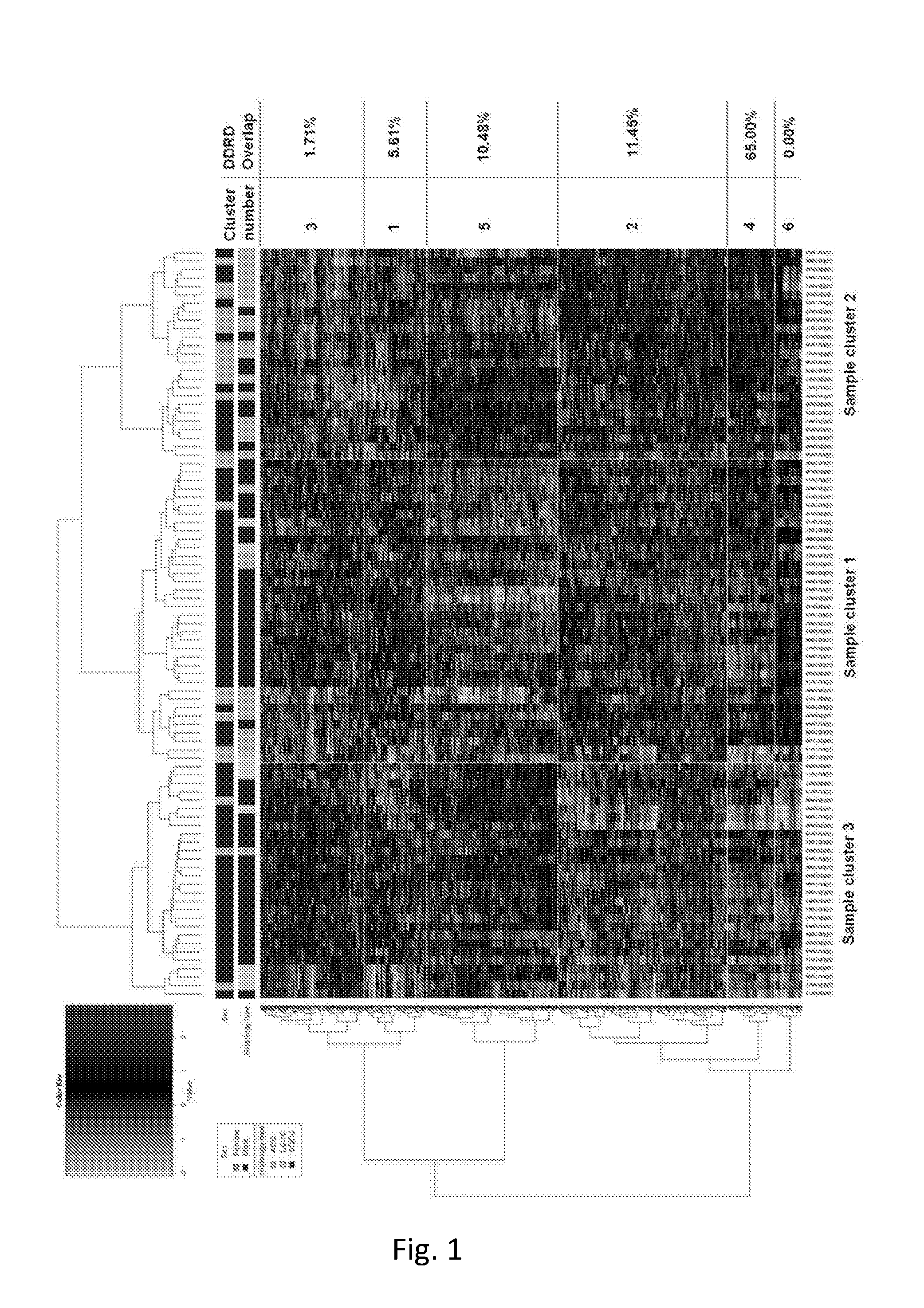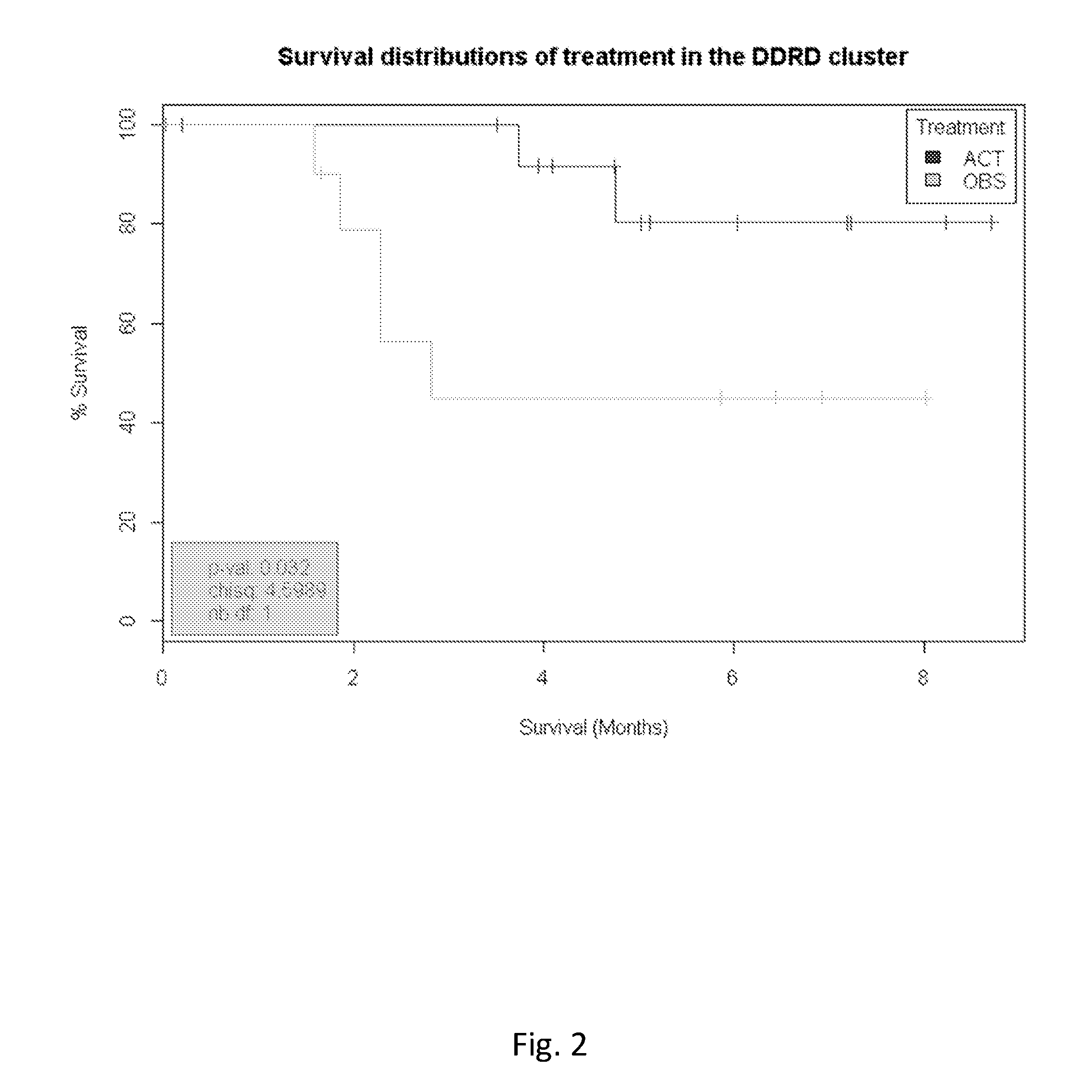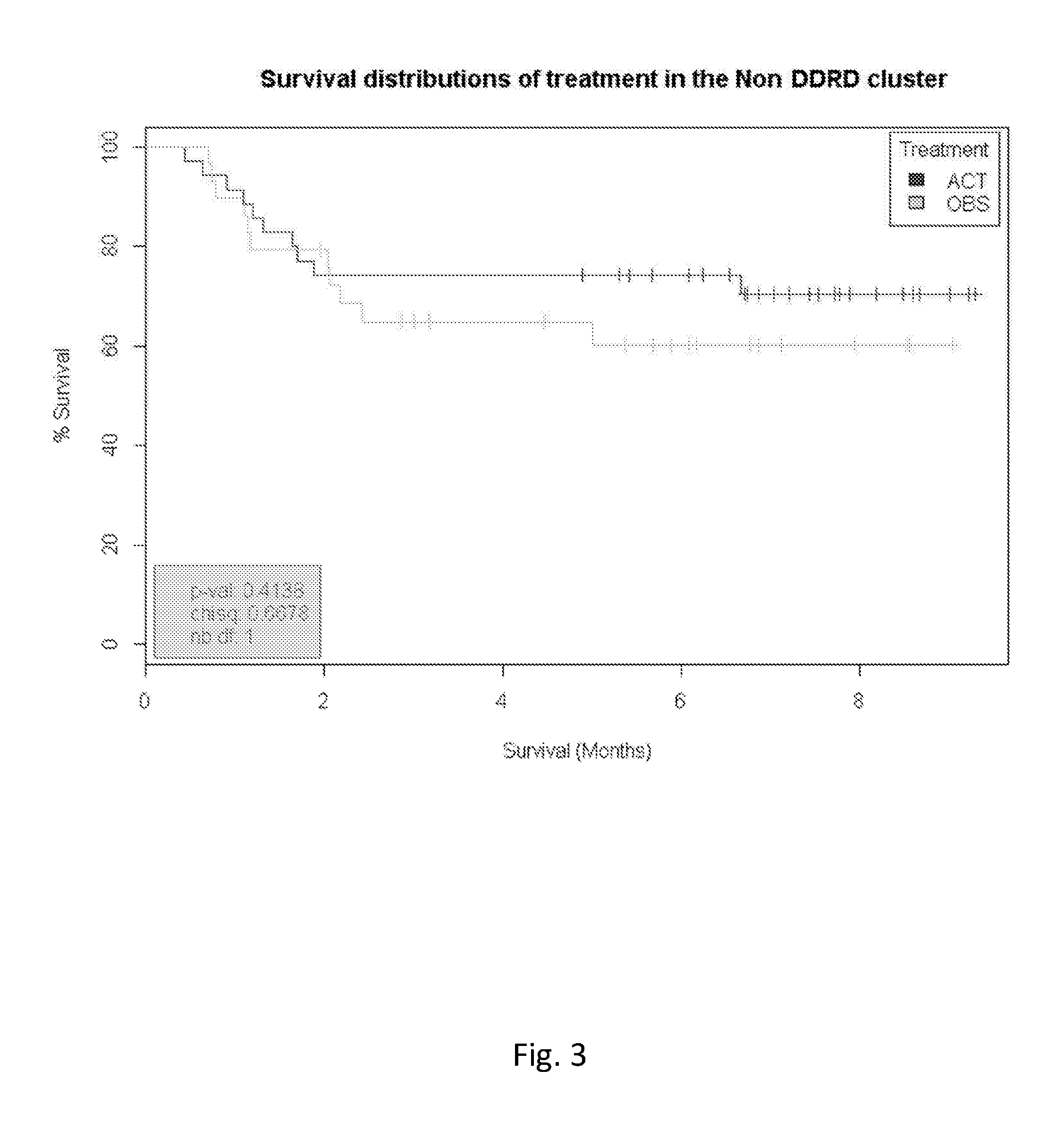Molecular diagnostic test for lung cancer
- Summary
- Abstract
- Description
- Claims
- Application Information
AI Technical Summary
Benefits of technology
Problems solved by technology
Method used
Image
Examples
example 1
Application of DDRD Assay to NSCL Cancer and Validation
Methods
[0163]Tumour Material
[0164]The gene expression analysis was conducted on a published cohort of 90 Non-Small Cell Lung (NSCL) frozen tumour tissue samples sourced from GEO (GSE14814). One sample was identified as outlier by Principal Component Analysis and was removed before further analysis was performed. This cohort of samples can be further described as follows:[0165]39 samples were non treated while 50 samples received adjuvant platinum-based therapy (cisplatin, together with a mitotic inhibitor, vinorelbine) treatment[0166]Age: 63.2 [46.3-80.1][0167]Sex: 66 Males and 23 females[0168]Stage: 45 stage I, 44 stage II
[0169]Data Preparation
[0170]All samples were processed using RMA (Robust Multi-array Average) pre-processing.
[0171]Hierarchical Clustering Analysis
[0172]The probe sets from the original platform (Breast DSA®) were initially remapped to the probe sets on the NSCL platform (Affymetrix Human Genome U133A Array) t...
example 2
Application of DDRD 44 Gene Signature to NSCL Cancer
Methods
[0185]Tumour Material
[0186]The gene expression analysis was conducted on a published cohort of 60 Non-Small Cell Lung (NSCL) frozen tumour tissue samples sourced from Array Express and GEO (E-MTAB-923 and GSE37745). This cohort of samples can be further described as follows:[0187]All samples received adjuvant platinum-based therapy (cisplatin, together with a mitotic inhibitor, vinorelbine) treatment[0188]Histology: 46 Adenocarcinoma. 8 Squamous carcinoma and 6 large cell carcinoma[0189]Stage: 22 stage I, 14 stage II, 23 stage III and 1 stage IV
[0190]Data Preparation
[0191]All samples were processed using RMA (Robust Multi-array Average) pre-processing.
[0192]DDRD Classification
[0193]For each sample the intensities for each of the 44 signature genes was calculated using the median value of the probesets mapping to the gene on the Affymetrix GeneChip® human genome U133 plus 2.0 array (Table 3C). The DDRD score was calculated as...
PUM
| Property | Measurement | Unit |
|---|---|---|
| Electric charge | aaaaa | aaaaa |
| Electric charge | aaaaa | aaaaa |
| Current | aaaaa | aaaaa |
Abstract
Description
Claims
Application Information
 Login to View More
Login to View More - R&D
- Intellectual Property
- Life Sciences
- Materials
- Tech Scout
- Unparalleled Data Quality
- Higher Quality Content
- 60% Fewer Hallucinations
Browse by: Latest US Patents, China's latest patents, Technical Efficacy Thesaurus, Application Domain, Technology Topic, Popular Technical Reports.
© 2025 PatSnap. All rights reserved.Legal|Privacy policy|Modern Slavery Act Transparency Statement|Sitemap|About US| Contact US: help@patsnap.com



